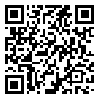Volume 23, Issue 4 (December 2019)
Physiol Pharmacol 2019, 23(4): 279-285 |
Back to browse issues page
Download citation:
BibTeX | RIS | EndNote | Medlars | ProCite | Reference Manager | RefWorks
Send citation to:



BibTeX | RIS | EndNote | Medlars | ProCite | Reference Manager | RefWorks
Send citation to:
Riyahi M, Taherianfard M. Motor defects, dopamine concentration and brain-derived neurotrophic factor in a rat model of Parkinson's disease can be affected by pre-infection with Toxoplasma gondii. Physiol Pharmacol 2019; 23 (4) :279-285
URL: http://ppj.phypha.ir/article-1-1438-en.html
URL: http://ppj.phypha.ir/article-1-1438-en.html
Abstract: (2620 Views)
Introduction: Parkinson’s disease (PD) is a neurodegenerative disorder with progressive degeneration of dopaminergic neurons in the nigrostriatal system. Toxoplasma gondii (TG) is a parasite that has gene for tyrosine hydroxylase and can produce dopamine. It is not clear whether TG infection has an effect on PD and its motor defect or not. The aim of the present study was to investigate the effects of 6-hydroxydopamine (6-OHDA) model of PD on motor defects, striatal dopamine and brain-derived neurotrophic factor (BDNF) levels in pre-infected TG rats. Methods: Fifty Sprague-Dawley adult male rats weighing 200-300g were used in five groups. Induction of PD were done by unilateral intra-striatal injection of 6-OHDA, and to prove PD induction the animals were tested for drug-free elevated body swing behavior and bar test. Dopamine and BDNF concentration in striatum were measured by ELISA kits. Giemsa staining of brain smears confirmed TG infection. Results: The results showed that TG infection prior to PD induction attenuated the elevated body swing bias and the latency in movement on the bar compared to PD rats without infection. The levels of striatal dopamine and the BDNF in TG infected PD rats was significantly higher than the PD rats without infection. Conclusion: Motor defects in experimental 6-OHDA- induced PD rats can be improved by pre-infection with TG through the increased levels of striatal dopamine and BDNF.
Type of Manuscript: Experimental research article |
Subject:
Neurophysiology/Pharmacology
| Rights and permissions | |
 |
This work is licensed under a Creative Commons Attribution-NonCommercial 4.0 International License. |







